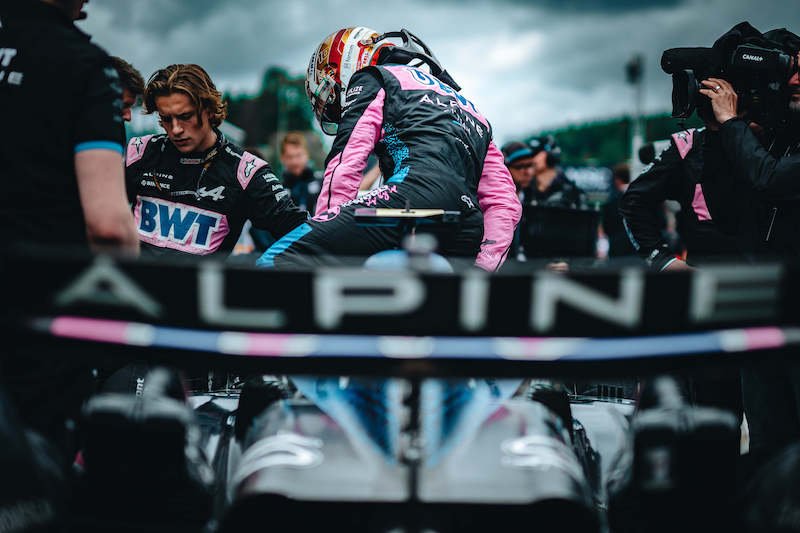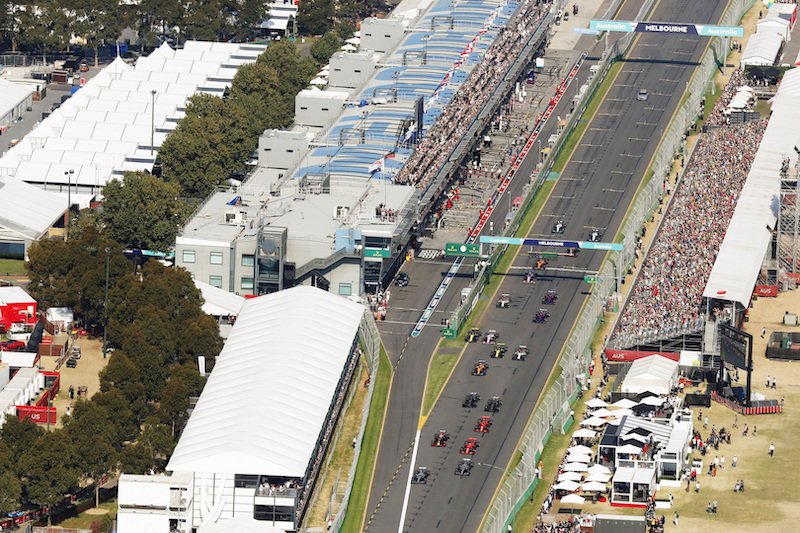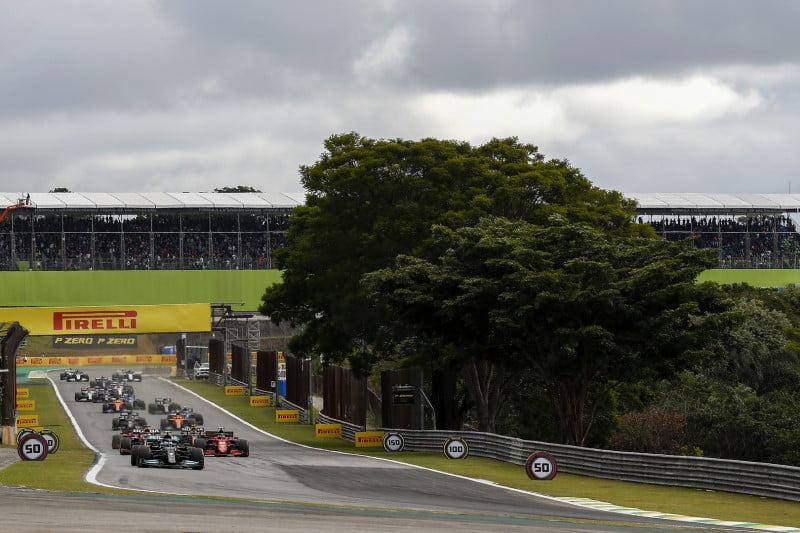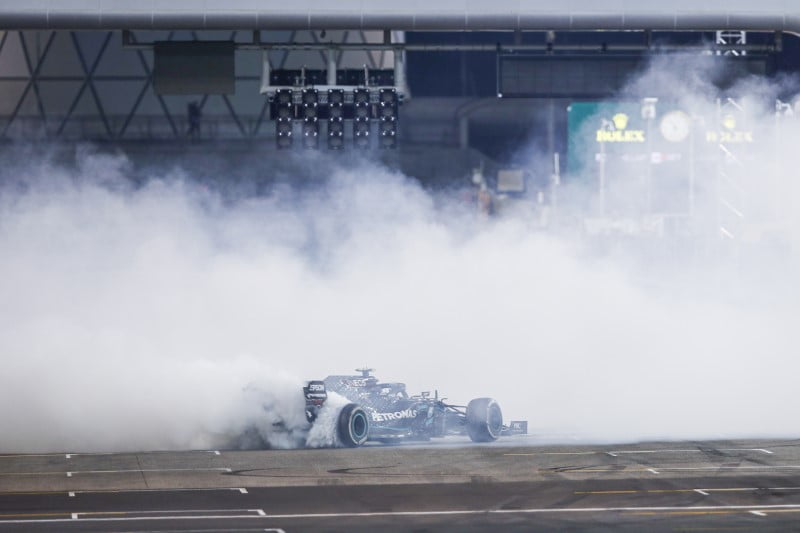2023 Belgian Grand Prix
Budding Formula 1 tech-journalist Ashwin Issac pens his ‘F1 Midfield Tales’ on Spa, the host of the 2023 Belgian Grand Prix. ‘F1 Midfield Tales’ will be a combination of data and analysis that will aim to dissect the uber-competitive F1 midfield race-after-race.
Preface for the F1 midfield in Hungary
For what was the last Grand Prix weekend before the official summer break of the 2023 Formula 1 championship, the speed brigade arrived at the legendary, iconic, awe-inspiring Circuit de Spa-Francorchamps.
This behemoth of a race track, nestled in the midst of the Belgian Ardennes countryside located in Stavelot, Belgian, was the host for the Formula 1 MSC Cruises Belgian Grand Prix 2023.
This track in its different forms has been an imminent part of Formula 1’s glorious history. Tales of bravery, heroism and even, sadly, tragedy have been told of this hallowed piece of land. It is a piece of paved road on which every motorsport driver and fans alike have dreamed of driving a capable car through its iconic bends and straights.
This is the longest track in the Formula 1 calendar consisting of some neck braking, recognizable, high-speed corners, and sections that test the aerodynamic efficiency of a grand prix car. Teams, based on the strengths of their car, can go in two directions with their setup: 1. Low downforce, which maximizes the performance on sectors 1 and 3 which consists of long straights and full throttle sections, or 2. High downforce, maximizes the performance in the twisty sector 2 and also helps with tyre longevity. Here’s a track map for reference:
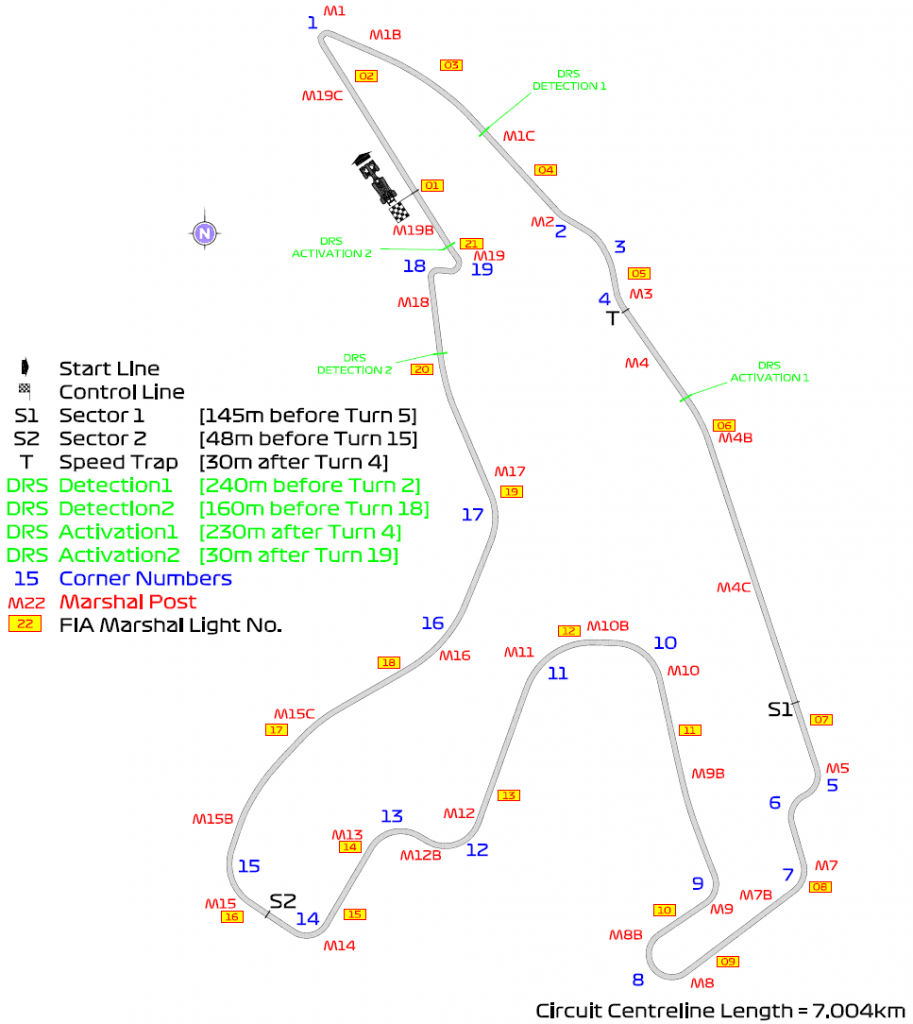
New stands and most importantly, necessary run-off areas were added beside Raidillon, Eau Rouge complex, apart there were no technical changes made to the track layout. Pirelli offered the mid-range of tyres for the GP.
Among the midfield, there were no major updates on any of the cars except for track-specific wing elements.
This was the third sprint weekend of the season, let’s ponder how the weekend revealed itself for the midfield contingent.
Observations from the F1 midfield in Spa
For the comparisons, data with similar variables are selected for a viable analysis. For instance, the fastest sectors by a team and not individual drivers are considered for the qualifying examination. Lap times are collected for the same tyre compound at comparable race periods.
The only practice session this weekend was interrupted by the weather, the session was deemed wet. In fact, every session of the weekend was influenced by the weather which added to the jeopardy of the teams and drivers.
Qualifying battle between the F1 midfield in Spa
The qualifying for the main race was wet to start with and the drivers were forced to run the inters for Q1. The quick draining feature of Spa helped with the rapid improvement of the track with a dry line appearing at the end of Q2. Drivers were confident enough to bolt on the slicks for Q3.
Since the conditions were varying across the session let’s take a look at the one-lap performance of the teams in Q1. The column chart below is a comparison of how the drivers stacked up against each other:
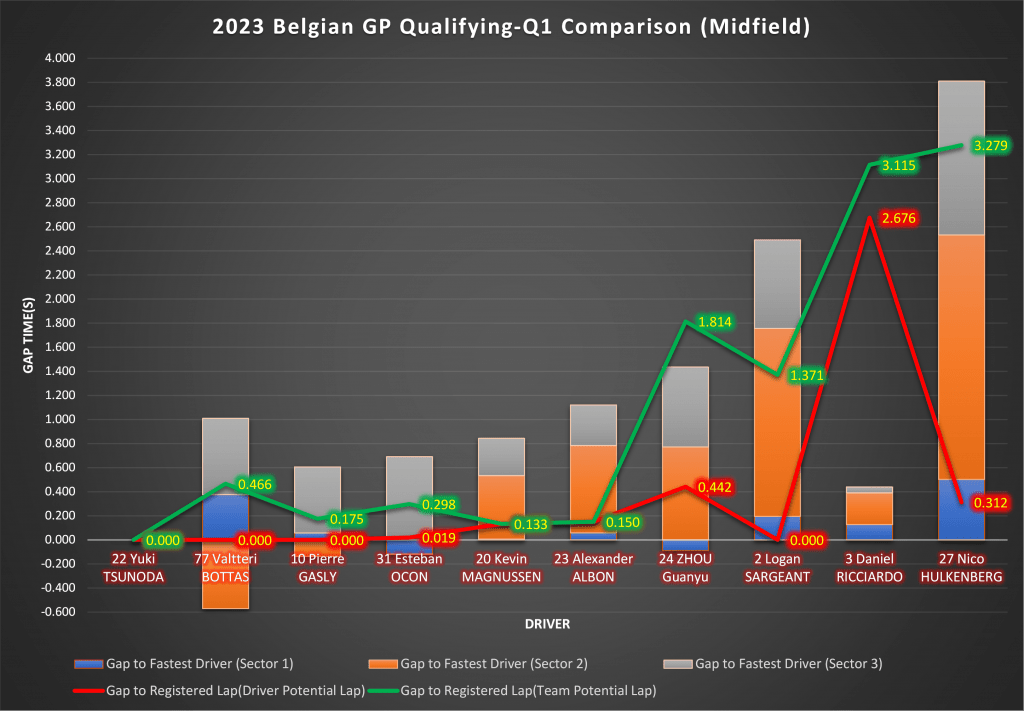
- Yuki Tsunoda in his Alpha Tauri was the fastest in Q1. The pace of the Alpha Tauri was impressive in these conditions and it was also confirmed by his teammate but unfortunately for Ricciardo, his fastest time was deleted due to track infringement.
- Bottas in his Alfa Romeo could have matched Tsunoda if he had grouped his fastest sectors together but his registered lap time was good enough to be the second fastest driver.
- Alpine was clearly the third-fastest team with both teammates close to each other.
- The Haas had enough pace for the cars to be promoted to Q2 but Hulkenberg faced some technical issues in his car.
- Williams couldn’t capitalize on their top speed advantage in these conditions and their drivers complained about their inters overheating and both were eliminated after Q3.
- None of the midfield cars made it to Q1.
Sprint Shootout between F1 midfield in Spa
The conditions were near identical to the qualifying session, it could be considered it was just that little wetter. That slight variation made a big difference in the performance of the cars. The column chart depicts the performances of the drivers in SQ1 of the sprint shootout:
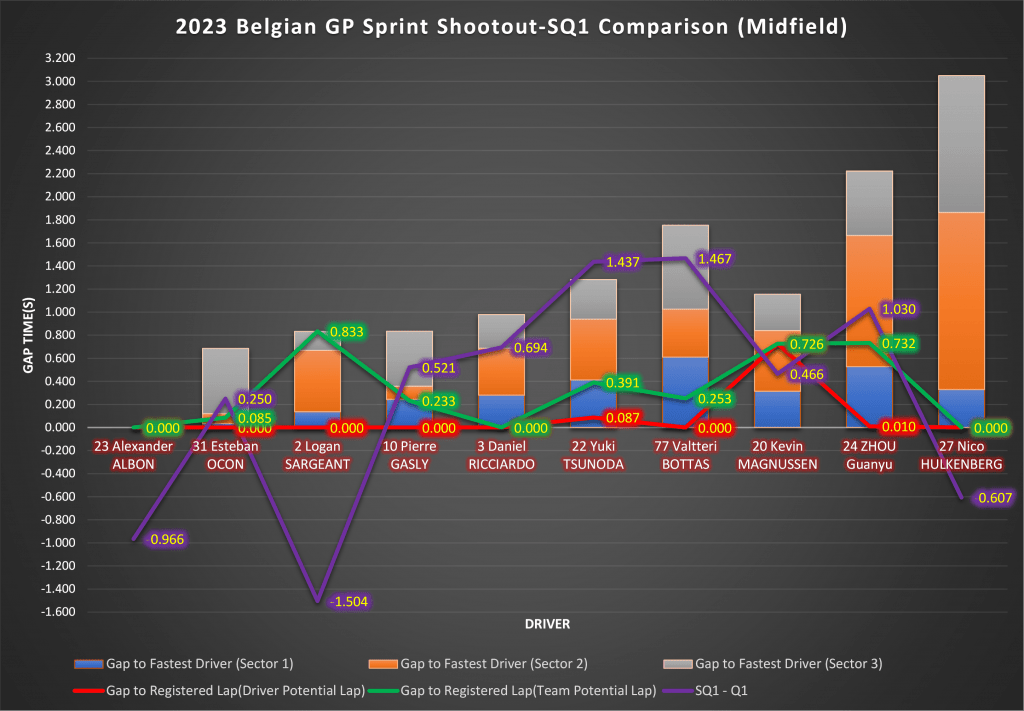
- Apart from Williams, every other team was slower in SQ1 when compared to Q1. The extra moisture seemed to have alleviated their tyre overheating problems. They were significantly faster in this part of the shootout.
- Alpine was the second fastest team in SQ1 but as the track improved and with the misfortunes of Aston Martin and Williams due to an untimely red flag incurred by the crash of Stroll on medium tyres in SQ2 were able to promote themselves to SQ3 and hence being the fastest among the midfield in the shootout.
- Alpha Tauri was not far off with Daniel out-qualifying his teammate.
- Haas should have been right behind them but Magnussen could string his fastest sectors together and the team blundered with their strategy with Hulkenberg, who couldn’t make it in time to complete his final lap.
- The team that lost the most pace from Friday was Alfa Romeo.
Sprint Race between the F1 midfield in Spa
There was heavy rain just before the start of the sprint race and this forced the showrunners to delay the start of the race.
Once the rain subsided, it was decided that the race would start behind the safety car and it would be a rolling start. The sprint was shortened to an 11-lap race.
The drivers were forced to start on the wet tyres and after the extended formation laps it was clear that the track had improved to intermediate conditions. So when the safety car was called in and the race was started, 50% of the grid opted to pit and shifted to the intermediate tyres and subsequently the other half pitted on their next visit to the bus-stand chicane.
The pace differential between the intermediate and wet tyres and more significantly the skirmish in the pit lane allowed for some position change throughout the grid and the line chart represents those changes:
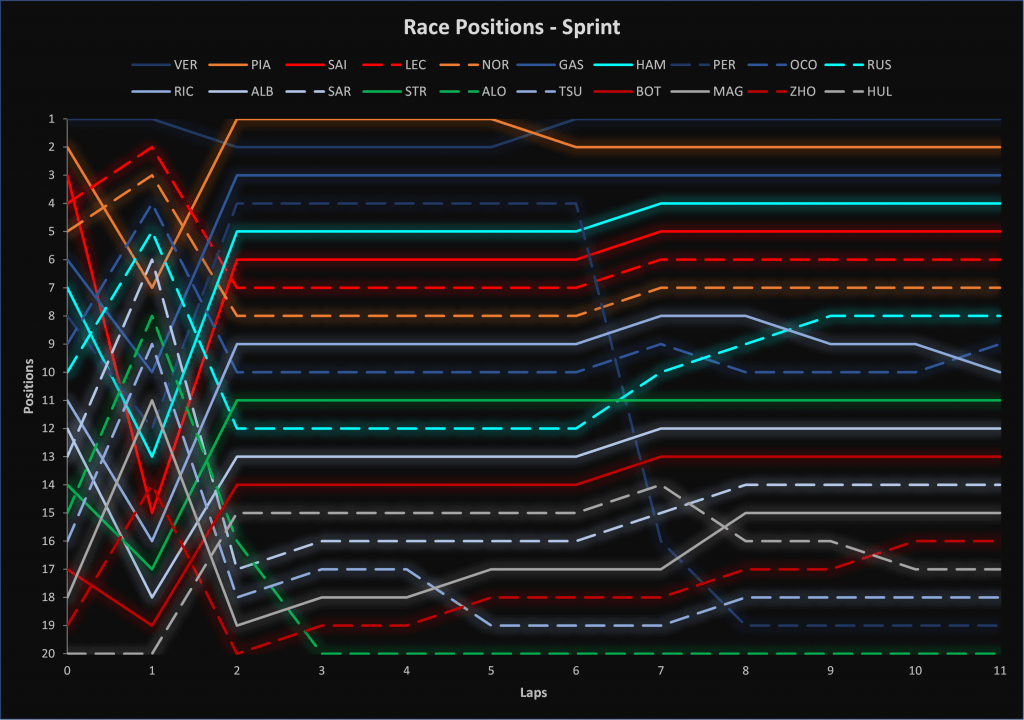
Overall, Valtteri Bottas made up the most places at the end of the race but he was assisted by the retirements of Fernando Alonso and Sergio Perez.
It was Pierre Gasly who benefited the most from the pitstop roulette and impressively maintained his P3 position till the end of the race. The positions gained by each driver are described in the table below:
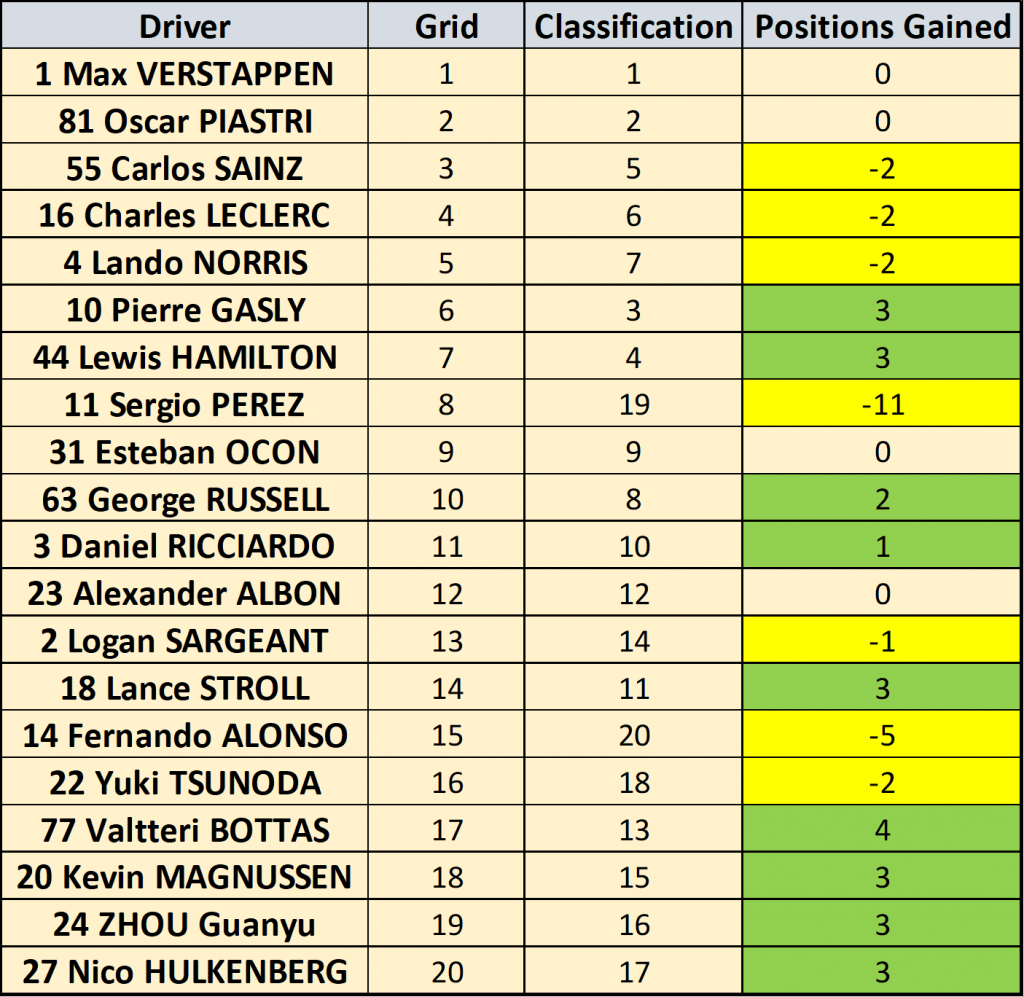
The Race between the F1 midfield in Spa
Stavelot finally offered some dry weather for the start of the main race but there was a threat of rain in the air. The drivers and teams were going in uninformed as they didn’t have any significant dry weather running to assess the behaviour of their cars at maximum load.
With the green conditions of the track, the tyre of choice for the majority was the soft tyres. Only Hulkenberg and Tsunoda started on the medium tyres. The rain did arrive on the 18th lap of the race but not enough to force the drivers on to wet weather tyres.
The degradation was higher than expected and it was soon understood that it was a 2-stop race. Every driver except for Hulkenberg bolted on the mediums for their 2nd stint and it was split between the compounds for the 3rd stint.
The charts below are a comparison of the race pace of teams and drivers. The first chart compares the pace of the fastest driver of each team on the mediums of their 2nd stint. The second chart compares the pace of all the drivers in their different compounds. Yellow markers in the second chart represent medium tyres and red markers represent soft tyres:
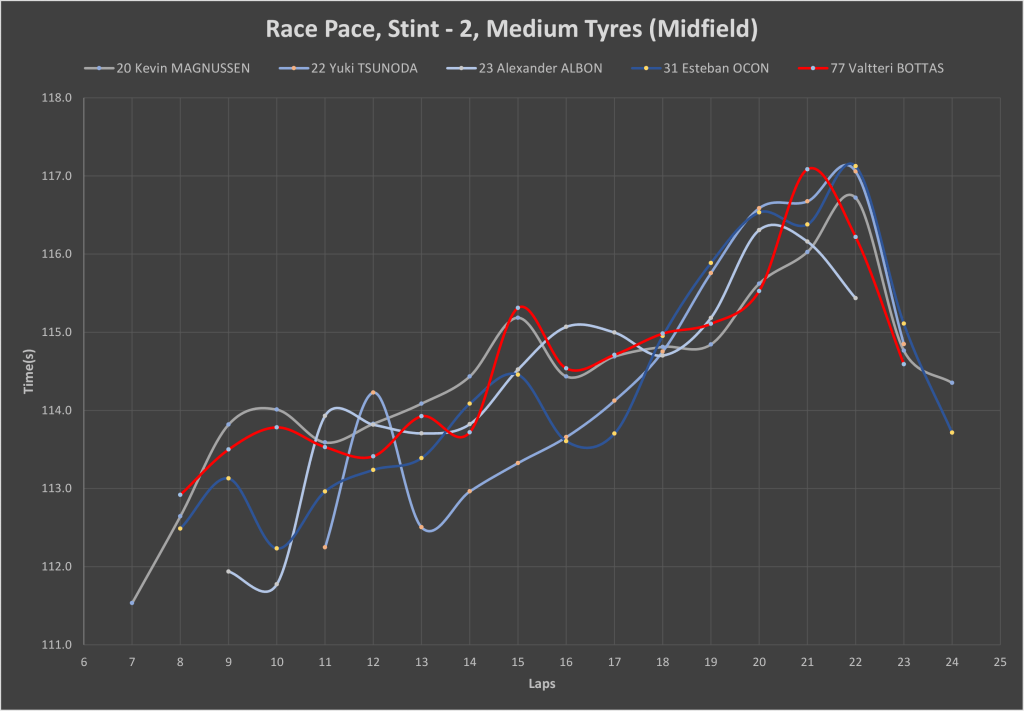
- Yuki Tsunoda, on average, was the fastest in this stint. Alpha Tauri’s updates were showing some positive signs.
- Though the Williams was a bullet down the straight their overall pace on the mediums was a step behind.
- Haas were initially slow in this stint but as the track cooled because of the light rain, their cars’ ability to generate that extra heat on the tyres helped them later in the stint.
- Alpine, on average, were the second-fastest team but at times a step behind the Alpha.
- Alfa Romeo was just ahead of Haas in their race pace.
- It is clearly evident that the degradation was high on race day as the lap times were slowing down in a steep curve.
- It should be noticed that when the rain arrived around laps 17 and 18 the lap times slowed down another step and Converged together and as the track dried again the lap time dropped down.
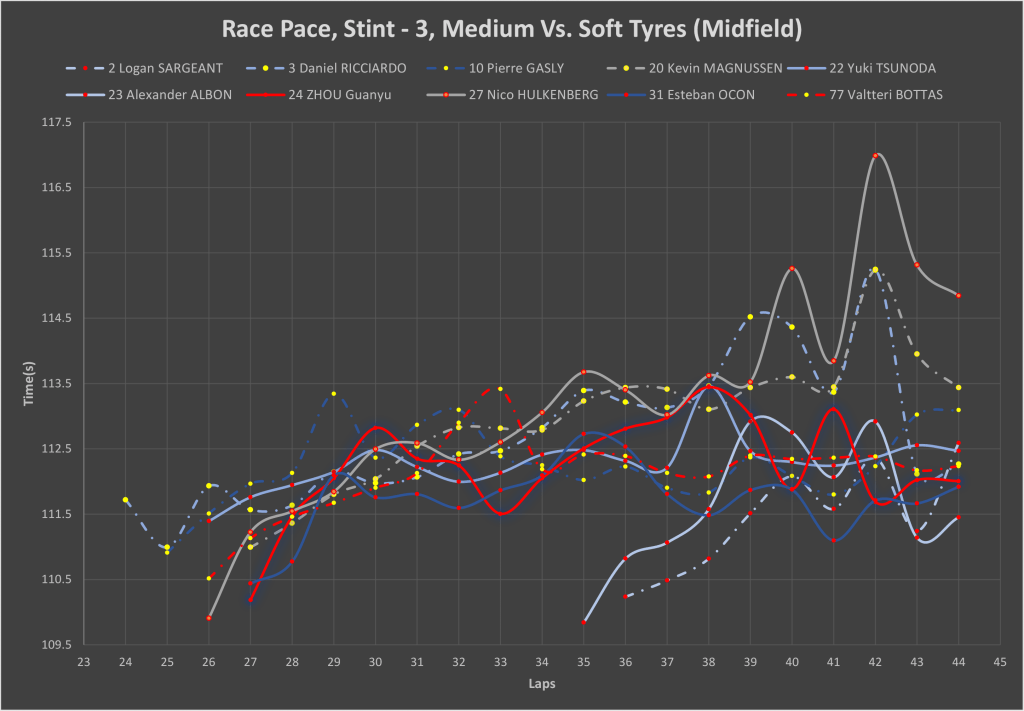
- On average, Ocon in his Alpine was the fastest in the last stint and this enabled him to make up a lot of places up the grid finishing in a respectable 8th position.
- The Williams on fresh soft tyres were the absolute fastest but their lap time quickly increased after a few laps. The soft tyres were the best race tyres in those conditions and it was thanks to Norris that the teams noticed its advantage. Williams erred in going for a second stint in the mediums and their late pitstop for the softs skewed their race.
- Initially, the pace difference between the two tyres was not much as the race progressed, surprisingly, it was the soft tyres that had more pace.
Conclusion from the F1 midfield in Spa
The Belgian weekend, as always, was entertaining, to say the least. The sprint weekend was successful in providing substance to the viewers in every session.
Alpine served up a shocker mid-weekend, announcing the departure of Team Principal Otmar Szafnauer, Sporting Director Alan Permane and Chief Technical Officer Pat Fry with ‘mutual understanding’.
That announcement didn’t deter them from having a good weekend at Spa, they were categorically the fastest team among the midfield and were knocking on the doors of Aston Martin.
Alpha Tauri had a good showing against their name with Tsunoda performing impressively in Sunday’s race. Their updates show great promise for the team.
Williams was struck by misfortune offered by the weather, this was supposed to be a very strong track for them with their straight-line performance but mixed conditions meant that they couldn’t capitalise on their strengths.
Alfa Romeo had a mixed weekend in which they performed poorly on sprint Saturday and in the mixed conditions of the qualifying but in fairly stable conditions of the race they made good progress and kept themselves above Williams and Haas.
Haas was the slowest team with Hulkenberg having a forgetful weekend, mostly caused by his team. Their plaguing tyre degradation is something they have to improve in order to stay in touch with the midfield.
The teams and drivers head on to a well-deserved summer break, the three weeks time gives everyone enough time to reflect on their first-half performances. There is a curfew on all proceedings for all the F1 teams but we can be assured that the teams will turn up to Zandvoort with something new in their arsenal. It’s our time to wait and be patient.
